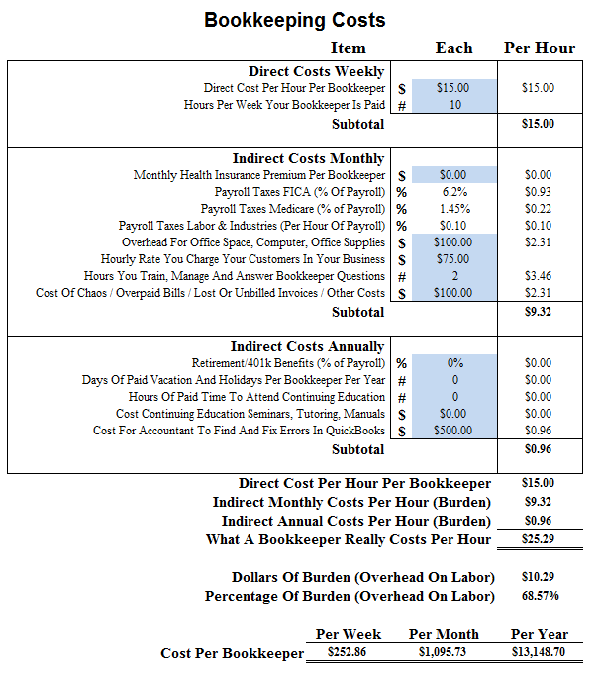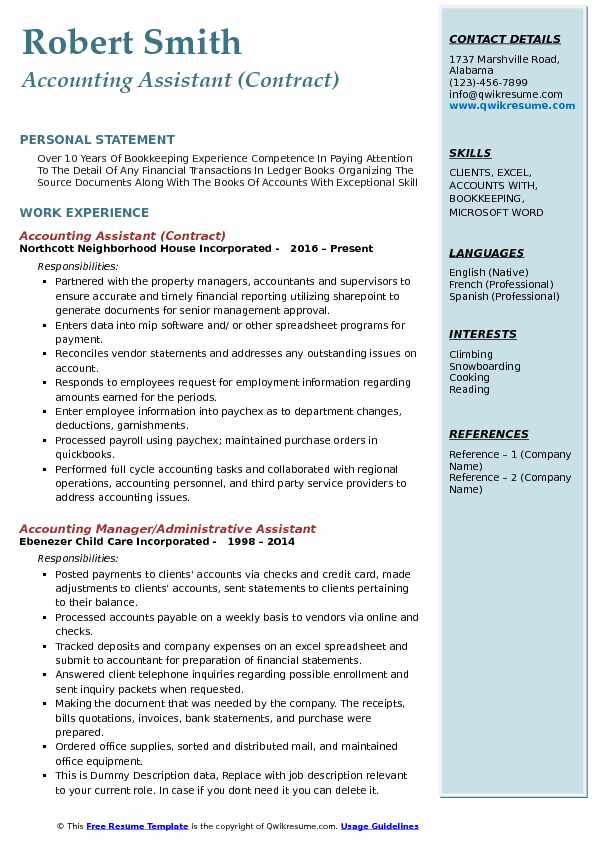
Journal accounts are used to keep track of cash transactions in bookkeeping. Journal entries should contain details such as account name, date, transaction description, credit and debit amounts, and a reference number. Companies assign a number to each transaction in order to make it easy for them to be found in other financial processes. Journal accounts are not necessary for all organizations. In fact, many organizations prefer to have only one account with one entry.
Double-entry bookkeeping
Double-entry bookkeeping uses debits and credits to record transactions. Each transaction affects one or both accounts in different ways. Selling an item will take money out of the inventory account while receiving payment will credit the cash. Credits and debits should be equal, so the total of the credits and debits should balance.
Double-entry accounting is important for tracking money, as it allows for the creation of financial statements that help business owners make better decisions. This accounting method reduces mistakes in bookkeeping and adds transparency to company finances. Some companies still use manual bookkeeping techniques, but most businesses use accounting software.
Complementary entry
Accounting can use compound entry. These entries can be used to save time and sum up data. These entries can be complicated to complete correctly. To avoid making mistakes, there are a few things you can do. Let's examine how to do compound entry in journal accounts.

A compound journal entry is one that affects more than just one account. A compound journal entry is different from a normal journal entry in that it can be more complex and include several credits and debits. This type of entry is also known as a reverse entry. These types of entries are made to clarify the bookkeeping and are typically made at beginning of new accounting periods. They reverse previous period's adjusting entries.
Adjusting entries
If a transaction is recorded in the accounting record for a period that is longer than the current accounting periods, it may be necessary to adjust the journal entries. An example: A company might pay $2,400 to an insurance agent on December 1, 2021. The transaction is for six months of coverage. It also represents an expense. But, insurance coverage is not required after December 31. To correct this error, an adjusting entry is required.
The purpose of adjusting entries is to make a correction to the balance sheet or income statement. Usually, an adjusting entry involves dividing income and expenses by the current period. This is done in three stages. The adjustment is then carried over to the general ledger in the following accounting cycle.
Standard journal
A flat file format used for standard journals accounts contains one or more journal entry. Each entry is assigned a base and foreign currency. The amount in the transaction currency must equal or be equal to the amount in the header BU. The control total currency should always match that of the base currency.
The journal entry's date is the accounting period. The journal should have equal credits and debits. A ledger is considered to be balanced if its totals do not exceed those in the ledger. A journal is defined as a journal which recurs in some frequency.

Recurring journal
You can streamline your journal creation process by creating recurring journals accounts. The process is simple, and you don't have to create separate entries for each week or day. First, you'll need to select the journal where you wish to create the journal entry. You can do this by clicking on the Search or Lookup buttons. Next, enter the new codes in the source journal field. Next, you will need to click on Copy From Source Journal History.
When you choose recurring journals accounts you can choose the currency. The currency drop-down list will only appear if the multi-currency option is enabled. You can also edit any information in a Recurring journal record using the Edit dialog. The Import button can be used to import additional lines into a Recurring journal entry record, similar to the Import Templates tool.
FAQ
What type of training is required to become a Bookkeeper?
Basic math skills such as addition and subtraction, multiplication or division, fractions/percentages, simple algebra, and multiplication are essential for bookkeepers.
They must also be able to use a computer.
Many bookkeepers are graduates of high school. Some even have college degrees.
Why is reconciliation important
It's very important because you never know when mistakes happen. Mistakes include incorrect entries, missing entries, duplicate entries, etc.
These problems could have severe consequences, such as incorrect financial statements, missed deadlines or overspending.
What do I need to start keeping books?
To start keeping books, you will need some things. A notebook, pencils or a calculator are all you will need to start keeping books.
What should I look for in an accountant's hiring decision?
When hiring an accountant, ask questions about their experience, qualifications, and references.
It is important to find someone who has done this before, and who knows what he/she's doing.
Ask them if they have any knowledge or skills that might be useful to you.
Make sure they have a good reputation in the community.
What is an Audit?
An audit is a review of a company's financial statements. Auditors examine the financial statements of a company to verify that they are correct.
Auditors check for discrepancies and contradictions between what was reported, and what actually occurred.
They also verify that the financial statements of the company are correct.
What is the value of accounting and bookkeeping
For any business, bookkeeping and accounting are crucial. They help you keep track of all your transactions and expenses.
They also help you ensure you're not spending too much money on unnecessary items.
You must know how much profit each sale has brought in. You'll also need to know what you owe people.
If you don’t have enough money, you might think about raising the prices. You might lose customers if you raise prices too much.
You may be able to sell some inventory if you have more than what you need.
If you have less than you need, you could cut back on certain services or products.
These things can have a negative impact on your bottom line.
Statistics
- In fact, a TD Bank survey polled over 500 U.S. small business owners discovered that bookkeeping is their most hated, with the next most hated task falling a whopping 24% behind. (kpmgspark.com)
- a little over 40% of accountants have earned a bachelor's degree. (yourfreecareertest.com)
- Given that over 40% of people in this career field have earned a bachelor's degree, we're listing a bachelor's degree in accounting as step one so you can be competitive in the job market. (yourfreecareertest.com)
- Given that over 40% of people in this career field have earned a bachelor's degree, we're listing a bachelor's degree in accounting as step one so you can be competitive in the job market. (yourfreecareertest.com)
- The U.S. Bureau of Labor Statistics (BLS) projects an additional 96,000 positions for accountants and auditors between 2020 and 2030, representing job growth of 7%. (onlinemasters.ohio.edu)
External Links
How To
How to do Accounting for Small Business
Accounting is an essential part of managing any business. Accounting includes the preparation of financial reports and income statements, as well tracking expenses and income. Quickbooks Online and other software programs are required. There are several ways to do small business accounting. You have to decide which method is best for you based on your specific needs. Below is a list of top methods that we recommend.
-
Use the paper accounting method. If you like simplicity, paper accounting might be the best option. This method is very simple. All you need to do is keep track of all transactions. You might consider investing in an accounting software like QuickBooks Online if you want your records to be accurate and complete.
-
Online accounting is a great option. Online accounting allows you to access your accounts from anywhere and at any time. Wave Systems and Freshbooks are three of the most widely used options. These types of software allow you to manage your finances, pay bills, send invoices, generate reports, and much more. They offer great features and benefits, and they are easy to use. These programs are great for saving time and money in accounting.
-
Use cloud accounting. Another option you have is cloud accounting. You can store your data securely on a remote server. Cloud accounting offers several advantages over traditional accounting systems. Cloud accounting isn't dependent on expensive software or hardware. Your information is kept remotely and offers you better security. It eliminates the need to back up your data. Fourth, you can share your files with others.
-
Use bookkeeping software. Bookkeeping software is similar in function to cloud accounting. You will need to purchase a computer and then install the software. Once the software is installed, you will have access to the internet to view your accounts whenever and wherever you like. You can view your accounts, balance sheets and transactions directly from your PC.
-
Use spreadsheets. Spreadsheets are used to enter your financial transactions manually. For example, you can create a spreadsheet where you can enter your sales figures per day. A spreadsheet's advantage is that you can make changes to them at any time without having to change the whole document.
-
Use a cash book. A cashbook is a book that records every transaction you make. Cashbooks come in different sizes and shapes depending on how much space you have available. You can either use a separate notebook for each month or use a single notebook that spans multiple months.
-
Use a check register. Use a check register to keep track of receipts and pay bills. Once you have scanned the items, you can transfer them into your check register. You can then add notes to help remember what you bought later.
-
Use a journal. You can keep track of all your expenses by using a journal. This is especially useful if you have frequent recurring expenses such rent, utilities, and insurance.
-
Use a diary. Use a diary. It is simply a notebook that you keep for yourself. You can use it for tracking your spending habits or planning your budget.